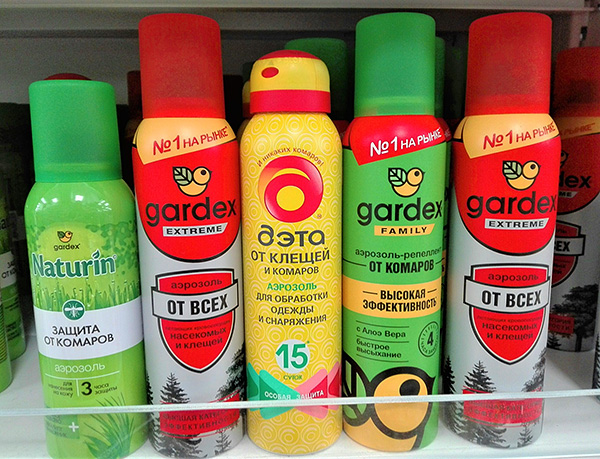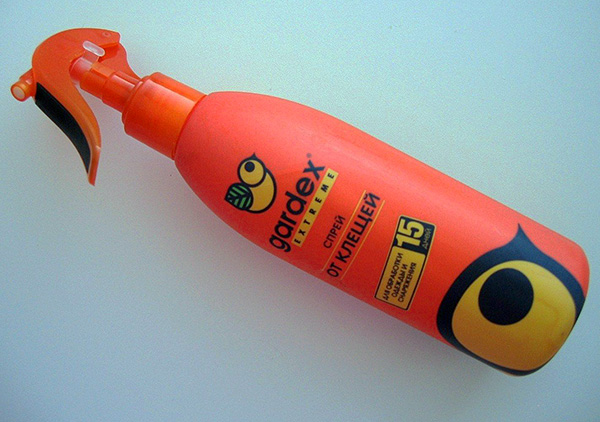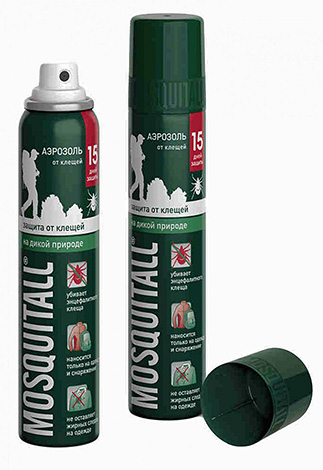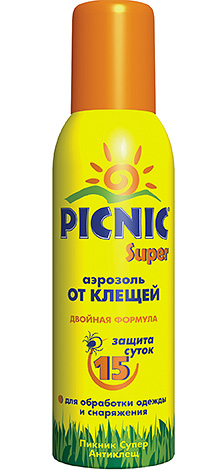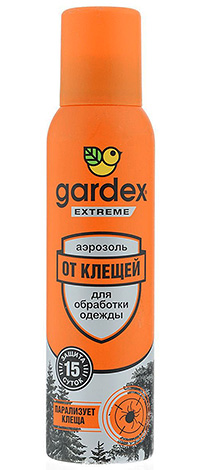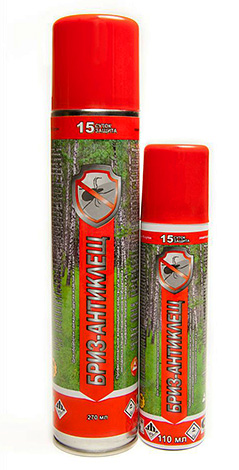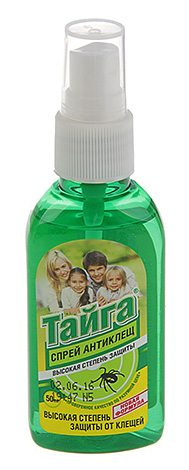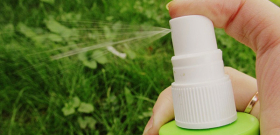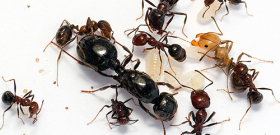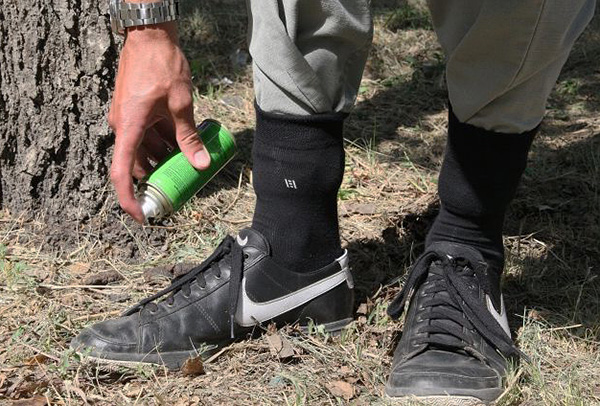
Tick repellants are products that repel these parasites and prevent them from biting people and animals. Their use is considered one of the most effective ways to prevent tick attacks on people and their pets in the wild, and in combination with some other methods, they can provide almost complete protection from bites.
At the same time, not all repellents are equally effective against ticks. Among such means there are original standards that repel almost all parasites, and there are those that are used more for the calm of the person himself than for true protection from blood-sucking arthropods.
Likewise, repellents vary in their safety. Some can be used for a long time and continuously (some are even allowed to be used in one-year-old children), while others have strict restrictions on the duration of use and on the age of the person.
This depends mainly on the type and concentration of the active ingredient in the respective repellent. In some products, the active ingredients are precisely repellent compounds, in others - acaricides, which cause damage to the nervous system of the tick and make it quickly detach from the surface that is dangerous for it. And all these components act differently on both ticks and humans.
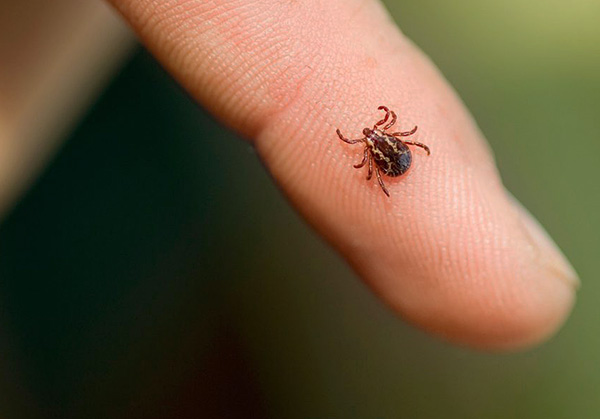
Let's see what tick repellants are on the market today, and how among this variety to choose the most suitable for a particular situation ...
Pay attention to the composition: the most effective active ingredients
For protection against tick bites and mosquitoes, today you can buy repellents based on more than two dozen active ingredients (including those that manufacturers only pass off as acting, although in reality they are a kind of dummies). In order to choose the best remedy for specific circumstances, it is useful to know which substances really repel and destroy ticks and to see that one or more of these substances are present in the composition of the preparation in sufficient concentration.

As part of this tool there is a powerful repellent diethyltoluamide (DETA) at a concentration of 35%.
What are these substances? Here are classic examples, time-tested and practiced by a large number of people:
- DEET (diethyltoluamide) - considered one of the most effective repellents, has been tested extensively and is most often used in anti-mites formulations. It is good for its relative safety for humans (under certain conditions, products based on it can be used for children) and the preservation of a deterrent effect even at low concentrations. At the same time, the duration of the drug based on DETA is directly proportional to the concentration of the substance in the composition. Diethyltoluamide belongs to olfactory repellents, that is, those that act on the sensory organs of ticks, and not directly on the nervous system upon contact with it - this can effectively prevent even the tick itself from catching clothes or skin. In tick repellants, DEET is the most commonly used today;
- Pyrethroids are substances with a pronounced acaricidal (that is, killing ticks) action. Due to the specific action on ticks (as well as on any other arthropods), after contact with them parasites trying to leave the treated surface as quickly as possible. In practice, this manifests itself in the fact that the tick, clinging to the treated skin or tissue, disappears after 20-30 seconds and falls into the grass without biting a person. The most commonly used tick repellants are alpha-cypermethrin, cypermethrin, and permethrin. Based on relevant tests and reviews, it can be concluded that alpha-cypermethrin is the most effective of these;
- Benzoylpiperidine - is notable for being a solid (other repellents are liquids under normal conditions) and is used as part of various powders. Preparations based on it are rare and few in number;
- Dimethyl phthalate is also a relatively rare component with conflicting experimental data on its safety. As a result, it is also relatively rare in mass-produced repellents.
All these components are approximately equally scare and ixodid ticks, and various blood-sucking insects, including mosquitoes, horseflies, midges. Therefore, preparations based on them are convenient to use as universal repellents in nature.

It's important to know
Much less effective (and sometimes completely useless) repellents based on various natural ingredients - essential oils, alcohol extracts of various "repellant plants", simply substances with a pronounced odor, some folk remedies (vanillin, garlic). None of these remedies show an effect even close to that of DEET.So, count on such funds in heavily tick-infested places with a high epidemiological risk for tick-borne encephalitis and borreliosis not worth it.
Forms of release of funds: which option to prefer?
Tick repellants come in a variety of forms, each with its own advantages and disadvantages.
For example, the most common products on sale today are available in the following forms:
- Aerosols - usually sold in metal cans of various sizes with a spray at the top and a mixture of repellent and propellant inside. The advantages of this form are the continuous supply of the drug when the sprayer is pressed and the ability to quickly treat a large surface area. The disadvantage is that it is difficult to apply repellent pointwise from an aerosol can, for example, around the eyes. Plus, you need to take into account some fire hazard of aerosols and the possibility of a balloon exploding if it is heated excessively in the sun or near a fire;

- Sprays - usually sold in plastic spray bottles. Their advantages are ease of use and explosion safety (pressure inside the container is equal to atmospheric pressure). The disadvantage is the inability to quickly process a large surface (for example, the entire jacket);

- Creams are good because they can be applied pointwise without treating unwanted skin areas. Plus, the amount of cream applied is easier to control than when using the same aerosols, and it is more economical (for example, if you spray your hands with an aerosol, then a significant part of the product is usually sprayed past the skin). In the form of a cream, preparations are rarely used (for example, in addition to aerosols, when clothes are treated from spray cans, and a cream is applied to the face and hands).

For guard from ticks in nature it is most rational and reliable to use aerosols or sprays. It is also convenient to use an aerosol to treat clothes and equipment, and a cream to protect the skin on the face and hands.
Important nuances of the practical application of such tools
Many repellents can be applied to the skin as well as clothing or equipment. The first option may seem preferable: it doesn’t matter if the tick is, for example, on the leg, or on the pants worn on it, in any case it will fall off without biting. If the agent is applied only to the pants, then, having managed to get under them, the parasite can stick to the skin that has not been treated with the drug.
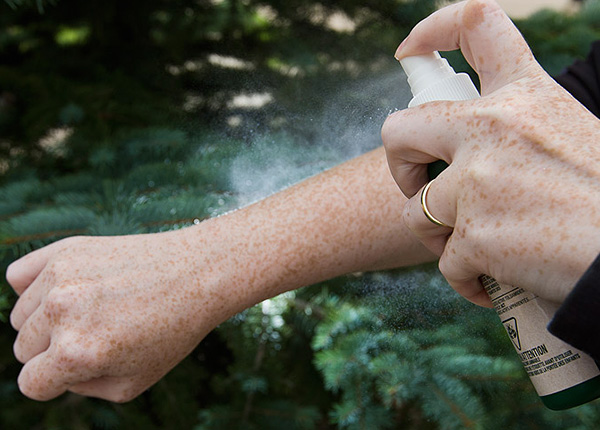
However, in practice, the application of drugs to unprotected areas of the body can be considered less preferable due to the possible irritating effect on the skin. Moreover, repellents, when in contact with the skin, can in some cases cause an allergic reaction, and with prolonged continuous use (for DEET at a concentration of 30% - more than 2 weeks), they can cause nervous disorders accompanied by insomnia, irritability, panic attacks. Pyrethroids can cause direct poisoning if their amounts on the skin are large enough.
This is especially true when using repellents in children from 1 year to 3-4 years.
Therefore, if possible, contact directly with the skin of any aerosols, sprays and creams from ticks, even the seemingly safest ones, should preferably be reduced to a minimum. It is useful to think over a set of clothes in advance so that it protects the surface of the body from ticks as much as possible. And already on these clothes you can apply a remedy that will repel parasites.

Similarly, tents (including mosquito nets), rugs and bedding, backpacks can be treated with repellents. All this reduces the likelihood of ticks getting on objects that people come into contact with.
On a note
Today you can buy special accessories that are kind of traps for ticks. They are overlays that are worn on trousers or shirt sleeves, and on their surface there are a large number of depressions, about the size of an adult tick. These pads actively absorb acaricides or repellents and keep them for a long time. When the tick climbs into the trap along the trousers, it tries to climb into each recess, mistaking it for a fold of skin. Realizing that this is not the skin, he climbs into the next, and everywhere "smeared" in the product. If this remedy contains pyrethroids, then after 2-3 such attempts, the tick will either simply fall off or die from poisoning in such a depression.
Fold-traps work on the same principle on special anti-tick suits. When processing such traps, it is desirable to use pyrethroid acaricides rather than DEET-based repellents.
In all cases, repellents remain active on clothing and equipment much longer than on skin. From the tissue, they are washed off and weathered much more slowly, and the tick contacts the tissue, as a rule, in the first place.
For comparison: mosquitoes avoid landing on a repellent-treated T-shirt for several days. On the skin, the same repellent will repel parasites for a maximum of 2-3 hours.
If tick repellents are applied to the skin, it is important to carefully control the frequency of application of the repellent.As soon as it exhales or is washed off later, you need to apply a new portion, because after “exhaling” the drug, the tick can safely grab onto the skin and after a while stick (see also the article How a tick bites: details about the process when it digs into the skin).
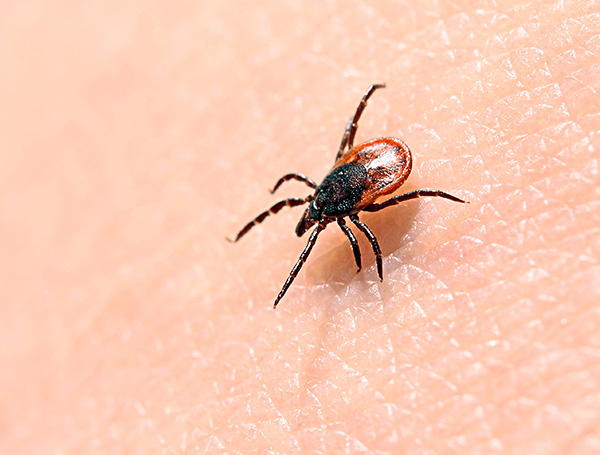
At the same time, it is not so easy to understand that the tool needs to be updated. In most cases, in places with an abundance of ticks, this is easy to do by the behavior of mosquitoes - there are many more of them here, and they are more actively pursuing a person. As long as mosquitoes do not sit on the skin, you can expect that the product is still active, and ticks will not attack either. As soon as mosquitoes begin to land on the skin, it means that ticks can also get on it, and the treatment needs to be updated.
If there are no mosquitoes around, then you just need to take into account the approximate period of validity of the product indicated in the instructions for use, and update it at appropriate intervals. In addition, a new portion of the drug must be applied to the skin after it has been, for example, in the rain, or after fording a water barrier.
Rules for the safe use of tick repellents
In all cases of application of any repellent, care should be taken to minimize contact of the product with the skin. For example:
- If possible, instead of shorts, it is better to wear thin, breathable summer trousers, either with cuffs at the bottom of the legs or tucked into socks. And already on the trousers apply the repellent itself;
- On a hike or a multi-day trip to nature, before going to spend the night in a tent, it is advisable to wash off the repellent from the skin, and apply a new one in the morning, when leaving the tent;
- On hikes, when moving through biotopes in which there are few ticks, you can not apply repellents to the skin at all.For example, in a mountain hiking trip, when moving in a forest or along an alpine meadow, it is imperative to use ticks, and when entering rocky screes, glaciers, snowfields, it is better to wash off, or at least not renew.
In any case, when applying repellent in the form of an aerosol or spray on the face, close your eyes and hold your breath, then spray the product, wipe it off the eyelids, and only then open your eyes (usually the face is treated more to protect against mosquitoes and midges than from mites).
On a note
It is undesirable to use repellents in the form of aerosols and sprays in people suffering from bronchial asthma and acute allergic rhinitis. They are better off with creams.
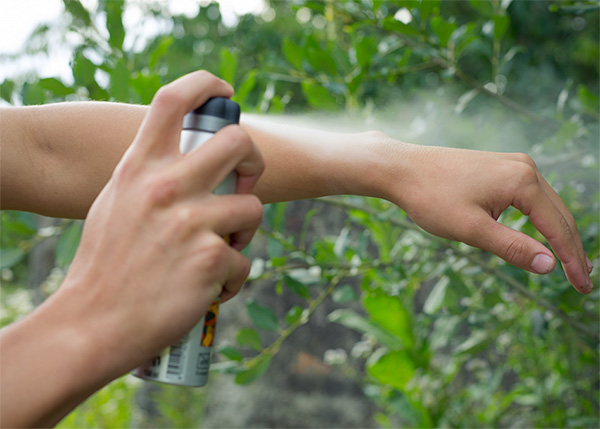
Before a long trip to nature, you need to check your own reaction to the repellent at home. It will be dangerous if, already on a hike, hundreds of kilometers from settlements, it suddenly turns out that one of the participants in the hike is allergic to repellents, he cannot use them, which means he will not be protected from tick bites fully.
It is necessary to use any repellents in strict accordance with the instructions for use. It is very important to observe all contraindications to the use of a particular drug, to note in a timely manner any manifestations of side effects and to observe the frequency of application of the agent indicated in the instructions and the amount in each serving.
Thus, most repellents based on DEET and pyrethroids are contraindicated for children under 3-5 years old, for pregnant women and people with asthma. Means in all forms should not be used if allergic to them after application to the skin. Moreover, in the presence of hypersensitivity, drugs can not be applied even to clothing.
Overview of the most popular tools
Today, there are a large number of quite effective tick repellents on sale, and next to them on the shelves in stores and on market stalls you can also buy “pseudo-repellents” that do not help repel ticks, but simply smell fragrant to only indicate their presence on clothes .
In the ranking of the most popular and really working means, it is worth noting, first of all, the following:
- DETA-Prof is a preparation based on DETA with an active ingredient concentration of 30%. According to the manufacturer, this is the highest concentration of DEET in repellents, providing a protective effect of up to 30 days on clothing. In fact, tests show that normally, when a drug with 30% DEET is applied to the skin, the protective effect lasts for 5-6 hours, and on clothes - up to 15 days. In addition to DEET, the composition of the product also contains essential oils of citronella, lavender and cedar, vanilla fragrance has been added to soften the smell. It is stated that these flavors enhance the effect of the drug by disorienting and repelling insects, but in fact they have practically no effect on ticks. Another advantage of the product (also declared by the manufacturer) is the maximum filling of the balloon. The price of the product depends on the volume of the balloon - for example, a 110 ml can costs about 200 rubles;

- Mosquitol - this manufacturer has an aerosol and spray from ticks. Both contain 7% DEET and 0.2% alpha-cypermethrin as active ingredients. This is enough to protect clothes or equipment from ticks for several days, provided that the treated fabric does not get wet. The funds are intended for application specifically to clothing and equipment (tents, backpacks, sleeping bags). Instructions for use do not provide for application to the skin. Also in the Mosquitol line there is a spray "Special protection against ticks" with a high content of DEET - 15%. Interestingly, in the presence of the same alpha-cypermethrin as part of "Special Protection", it is allowed to apply to the skin, but not more than 1 time per day. The price of a simple spray against ticks Mosquitol (100 ml) is about 150 rubles, an aerosol per 100 ml is about 200 rubles, a spray "Special protection against ticks" is about 250 rubles. An analogue of Moskitol is an aerosol Help;

- Picnic Super Antiklesch is a relatively inexpensive (about 100 rubles per 125 ml bottle) drug based on two pyrethroids - alpha-cypermethrin and imiprotrin. It is intended for application to clothing and equipment, and clothing treated with it can only be worn after the solution has dried. The product should not be applied to the skin, and in case of accidental contact, it must be washed off with soapy water. According to the manufacturer, it remains active on clothes for up to 15 days;

- Off Extreme is an analogue of DETA-Prof (according to the main active ingredient), contains DEET in an amount of 30%. It does not contain, unlike DETA-Prof, essential oils, it costs about 250 rubles per 100 ml bottle. You can buy even in ordinary pharmacies;

- Gardex Extreme from ticks - contains, like Picnic Super Antiklesh, two pyrethroids - alpha-cypermethrin (0.2%) and permethrin (0.15%). Also not intended for application to the skin. According to the manufacturer, it retains its effectiveness on clothes for 15 days. A 150 ml bottle costs about 250 rubles. Judging by the reviews, with regular one-day trips to nature, one bottle is enough for the whole season;

- Breeze-Anticlesh is a development of the same manufacturer that produces DETA-Prof, only in Breeze-Anticlesh the active ingredient is alpha-cypermethrin (0.25%).It costs about 200 rubles for a 110 ml bottle, it is an analogue of Picnic Family in terms of the active substance;

- Taiga is one of the most popular aerosols in the Siberian regions, largely due to its low price - about 100 rubles per 125 ml spray bottle. In composition, it is an analogue of Breeze-Anticlesch with a slightly lower concentration of alpha-cypermethrin (0.17%).

As you can see, the compositions of most of these funds are quite similar and differ only in the set and percentages of active ingredients. This means that when planning a field trip, in most cases, you can not go in cycles in finding the best tick repellant - they are all, in general, identical to each other in action. Moreover, you can not be tied to a specific brand or name. It is simply important to know that skin application must contain DEET, clothing and equipment must contain pyrethroids or a combination of pyrethroids and DEET.
If you remember the names of these substances and be able to find them in the composition of the product (including, in English: DEET - DEET, alpha-cypermethrin - alfa-cypermethrin), then a good and effective aerosol can be bought in any country in the world, no matter how called.
Which tick repellent to choose
In each specific situation, different repellents will be optimal.
For example, for children on a picnic or a walk in the park, it is better to take Picnic Super Antiklesch or Mosquitol from ticks. Both the one and the other drug are applied only to the child's clothes before the walk. Of course, the clothes themselves must be chosen so that they cover the legs to the ankles and the arms to the hands.
On a note
Children's repellents, allowed for children under 3 years old, based on essential oils, it is better not to use because of their low effectiveness, and preparations based on DEET, which are applied to the skin, are contraindicated for children. Only some of the sprays can be applied to babies on the skin.
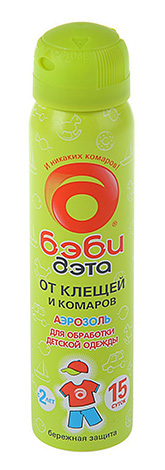
The situation is similar for pregnant women - it is also better for them to use the most protective clothing, and apply the repellent on it. In extreme cases, during pregnancy, you can use aerosols or creams with a small concentration of DEET - 8-15%, but without pyrethroids (for example, the usual Off! from mosquitoes).
Babies do not need to process either clothes or body at all. Such babies are taken for a walk either in a stroller or in a special cradle. It is these accessories that are processed with pyrethroid products at home from the outside, so that in nature they are protected as much as possible.
On long trips to the wild, to places where there are a lot of ticks, you should take the most powerful preparations with you. The best option here is a pyrethroid-based aerosol for clothing and equipment, plus a DEET cream or spray for application to the skin. Equipment and clothing must be processed before departure, and then the drug should be applied to them when it is noted that the same mosquitoes are already landing on the fabric, which means that ticks can climb on it.
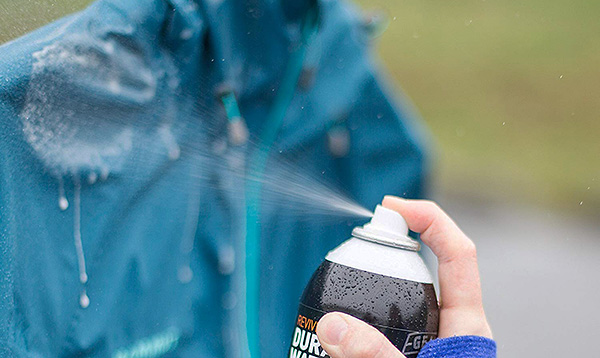
Only exposed parts of the hands, face and legs should be treated with DEET (if you plan to walk without socks). Moreover, the greater the number of ticks in a particular area, the greater should be the concentration of DEET or pyrethroids in the product.
On a note
When choosing one or another means, it also makes sense to rely on the reviews of people who often and for a long time stay in heavily ticked places and catch hundreds of ticks on themselves. per season - they can see a clear difference between the situations before and after the application of one or another repellent.
To protect dogs and cats from ticks, there are also special sprays and drops on the withers - Bars, Vet's, Frontline and others. They are not allowed to be used on humans.
Combination of repellents with other means and methods of protection
Even with high concentrations and sufficient effectiveness of the active ingredients in tick repellants, they do not provide absolute protection against parasites. But in combination with other means and methods, repellents can reduce the likelihood of a tick bite to a minimum.
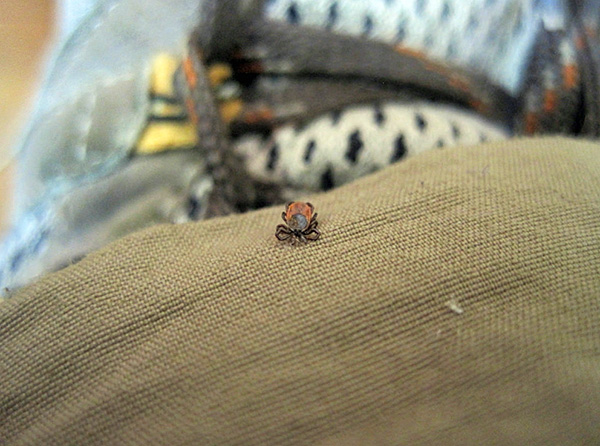
For this you need:
- Cover the surface of the body with clothing as much as possible. Clothing should be matched to the weather so that it is not hot and does not want to be removed, it should have rubber cuffs at the ankles and wrists. Trousers should be tucked into socks, and a shirt or sweater should be tucked into trousers. If such clothes are treated with a repellent, then this will give a guarantee of 90-95% that the tick will not bite a person;
- In heavily ticked places, it is advisable to use special anti-tick suits that do not have a top-bottom division, on the sleeves and legs of which there are special traps for ticks;
- Use special accessories - overhead traps, pockets for ticks, in which they accumulate and from which they can be removed;
- Avoid areas with the highest concentration of parasites - trails and resting places for wild animals, livestock movement trails, areas with tall dense grass;
- Regularly inspect trousers while walking along the trail, remove detected ticks, even if the product is applied to the clothes and the parasites quickly disappear on their own;
- Conduct joint mutual inspections, removing detected parasites.Including doing this before going to bed, examining the body without outerwear.
In addition, it is important to remember that it is not the tick bite itself that is dangerous, but the infection that the parasite can transmit with saliva. Therefore, before visiting an area where there are a lot of ticks, and infection with tick-borne encephalitis is likely, it is imperative to do vaccination from this disease, as well as to know the rules of behavior after a tick bite and about the risk of infection with Lyme borreliosis.
Testing a repellent on ticks (a good example of a highly effective remedy)

